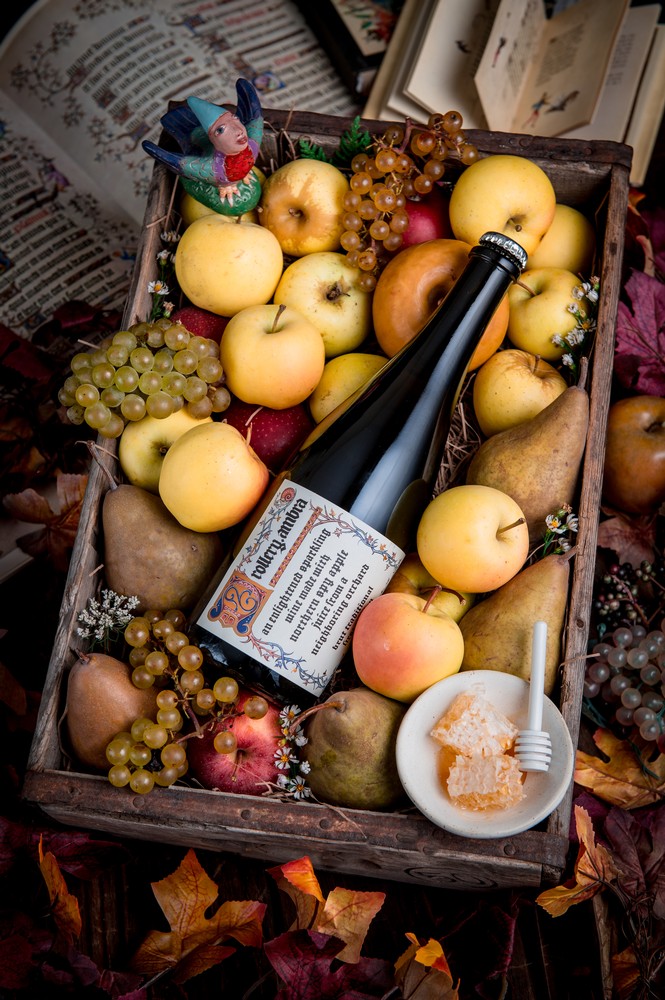Drollery Ambra
85% Northern Spy apples; 15% Malvasia Bianca
Tasting Notes
Flavors of golden apple and ripe bosc pear meet delicate tropical fruit and subtle layers of star thistle honey. Italian Malvasia Bianca grape skins add tartaric acid not naturally present in apples, enhancing soft yet crisp textures and tannins in the cider. The grape’s aromatics meld into the Northern Spy apple essence, creating embedded flavors held together by structural and tannic layers.
Philosophy
Here at Mari, grapes are always our main focus, but a realization that we are in the land of interesting apples coincided with a desire to better utilize grape skins destined for the compost heap. In the tradition of Italian ripasso wines and with the resurgence of the piquette style, we decided to take our most exotic grape and pomace and fermented them with fresh Northern Spy apple juice. A true winemaker’s cider, the Drollery Ambra rounds out the linear qualities of pure sparkling apple cider with depth imparted from pressed grape skins, lending tannin and tartaric acid to create a drink both unique and complex.
The name Drollery was inspired by the long tradition of monks transcribing manuscripts and fantasizing whimsical mythological creatures, which they would doodle in the margins of their work. Much like this marginalia, we consider our work with apples to be our fantastical side project, created at the edge of our main wine portfolio.
Production
Malvasia Bianca grapes were harvested from our Neeson vineyard on October 19th, 2019 and fermented on their skins for three weeks. At this time, we brought in freshly pressed Northern Spy apple juice from a neighboring Old Mission orchard. The apple juice began fermenting in a stainless steel tank and a portion was transferred to open top bins where it was fermented with the freshly pressed Malvasia skins. After fermenting for 7-10 days on skin, the juice was transferred to a variety of neutral oak vessels for aging, where it spent 11 months. To finish, the wine was bottle conditioned, creating carbon dioxide the traditional way in the bottle under a cap. Heavy lees and the bulk of sediment was disgorged after a year, with some naturally occurring fine sediment remaining.
